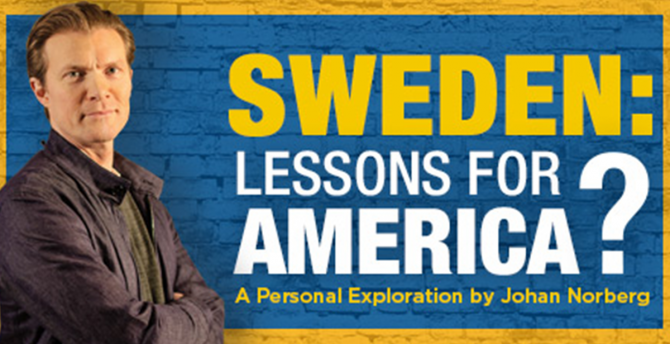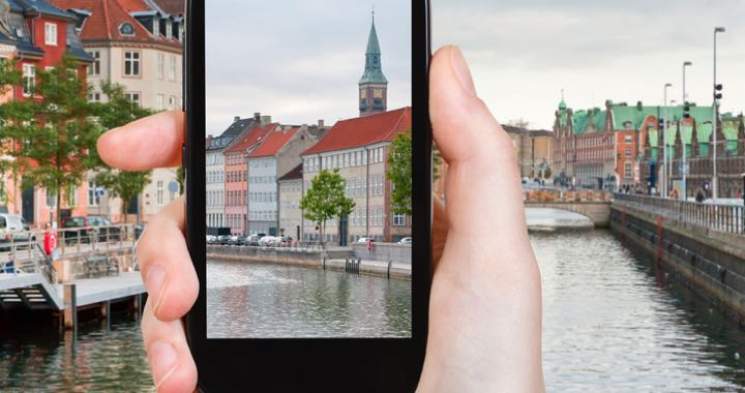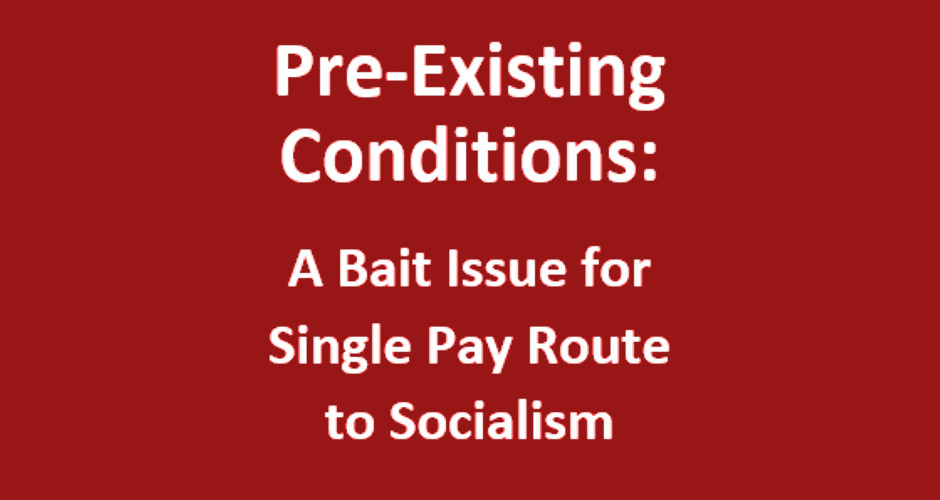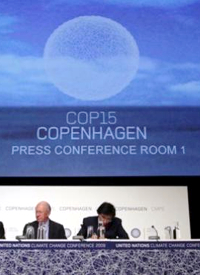From: TheNewAmerican.comBy John Larabell

According to the World Happiness Report published by the United Nations Sustainable Development Solutions Network, Danes are the happiest people in the world. Norwegians are the fourth happiest (out of 157 countries), and Swedes are the 10th happiest. Americans, by the way, come in at 13th happiest. So what’s their secret? According to many liberal progressives, it’s their Big Government social-welfare states providing for the well-being of the populace that ensures such domestic bliss.
Here’s an alternate explanation: It’s culture, not Big Government, that is the core of Scandinavian society, and that makes its welfare state work to the degree that it does. So let’s take a look at some of the unique highlights of Scandinavian culture that set this region apart from other countries.
The Land of Janteloven
Janteloven, or the Law of Jante, is a term used to describe a powerful emphasis in Scandinavian culture on social conformity, on not trying to stand out and succeed, on not thinking you are anything special. The term comes from a novel entitled A Fugitive Crosses His Tracks, written by Dano-Norwegian author Aksel Sandemose and published in 1933. In the book, Sandemose (born Aksel Nielsen) writes about a fictional Danish town called Jante in a thinly veiled parody of his rural Danish hometown of Nykøbing Mors. In Jante, the residents, through strong social pressure and passive-aggressive behavior, enforced an unwritten code of conduct upon each other called the Law of Jante, which consisted of 10 rules:
You’re not to think you are anything special.
You’re not to think you are as good as we are.
You’re not to think you are smarter than we are.
You’re not to convince yourself that you are better than we are.
You’re not to think you know more than we do. 
You’re not to think you are more important than we are.
You’re not to think you are good at anything.
You’re not to laugh at us.
You’re not to think anyone cares about you.
You’re not to think you can teach us anything.
This story was, of course, fictional, but Scandinavians recognized it as an underlying feature common to their cultures. And while Janteloven was more pronounced in the older peasant culture of Scandinavia, it’s still present in modern-day society, albeit less obvious. In his The  Almost Nearly Perfect People: The Truth About the Nordic Miracle (alternately The Almost Nearly Perfect People: Behind the Myth of the Scandinavian Utopia), British author Michael Booth, who is married to a Danish woman and has lived in Denmark on and off for more than a decade, has written about the law of Jante. According to Booth, “Sandemose really nailed the Danes. And not just the Danes: Jante Law sent ripples of recognition beyond Denmark — the Norwegians are all too familiar with them, and … they act as an even more powerful normalizing force in Sweden…. My experience has been that Jante Law operates everywhere in Denmark on some level or another, but it is true that it is harder to spot amid the cosmopolitan whirl of the capital…. Jante law still underscores attitudes and behavior to a greater extent on the Danish peninsula, and along the yet more insular, traditional west coast in particular.”
Almost Nearly Perfect People: The Truth About the Nordic Miracle (alternately The Almost Nearly Perfect People: Behind the Myth of the Scandinavian Utopia), British author Michael Booth, who is married to a Danish woman and has lived in Denmark on and off for more than a decade, has written about the law of Jante. According to Booth, “Sandemose really nailed the Danes. And not just the Danes: Jante Law sent ripples of recognition beyond Denmark — the Norwegians are all too familiar with them, and … they act as an even more powerful normalizing force in Sweden…. My experience has been that Jante Law operates everywhere in Denmark on some level or another, but it is true that it is harder to spot amid the cosmopolitan whirl of the capital…. Jante law still underscores attitudes and behavior to a greater extent on the Danish peninsula, and along the yet more insular, traditional west coast in particular.”
Booth further elaborated on the Scandinavian emphasis toward conformity and equality in an interview with Reason magazine:
We sent our kids to a mainstream state school, which is based on the principles of raising the lower ability children up to the median. It’s all-inclusive, so you can’t exclude children if they’re badly behaved or have special needs or that kind of thing. That didn’t work from our point of view. Our children didn’t take well to having chairs thrown at them and teachers not turning up.
I was in Copenhagen a while ago and I saw two or three kids have an impromptu running race on the pavement and one of the kids won and did an American-football-style celebration. His mother grabbed him by the arm and scolded him for that.
My son’s class did a production of Treasure Island. The teachers rotated the class so that in every scene someone different played Long John Silver or Jack Hawkins or whatever. It made absolute nonsense of any sense of drama or narrative. But again, it was this idea: Everyone should have their turn. Everyone should be treated equally, rather than celebrate one student who was a great singer or actor.
As could be expected, upsetting the status quo is also a no-no, and that includes complaining too much (e.g., about taxes or government). This “don’t rock the boat” mentality, according to Booth, is probably a big reason why Scandinavian countries have such “happy” people. In fact, Booth noted that when asked about being the world’s happiest people, many Danes were incredulous and shrugged off the study as something not to be taken very seriously.
Along with this collectivist, don’t-stand-out-too-much, groupthink attitude prevalent to varying degrees, Scandinavian culture has also traditionally placed a great deal of emphasis on trust, honesty, a strong work ethic, and a high level of social cohesion. Norway, Sweden, and Denmark routinely rank as some of the best countries in studies on perceived levels of government corruption, and, according to Booth, one can often see parents leave their babies outside in strollers unattended while they enter a shop or a café. Such is the level of safety and trust traditionally found in Scandinavian culture. This also translates into low crime
on trust, honesty, a strong work ethic, and a high level of social cohesion. Norway, Sweden, and Denmark routinely rank as some of the best countries in studies on perceived levels of government corruption, and, according to Booth, one can often see parents leave their babies outside in strollers unattended while they enter a shop or a café. Such is the level of safety and trust traditionally found in Scandinavian culture. This also translates into low crime
rates, and very low murder rates in particular. And this has little to do with government: Norway, for instance, has a fairly high level of gun ownership.
It is precisely these cultural traits that have allowed Scandinavia to see a degree of success with the socialist system we see there today. As foreign-born Swedish researcher Nima Sanandaji observes in Scandinavian Unexeptionalism: Culture, Markets and the Failure of Third-way Socialism,
 For a long time, the religious, cultural and economic systems in Scandinavian societies fostered individual responsibility and a strong work ethic. These norms were important for the success of the nations as they moved towards free-market systems in the late nineteenth and early twentieth century. In addition, social democratic politicians viewed this unique culture, coupled with uniquely homogenous societies, as the optimal starting point for expanding welfare states. Since the norms relating to work and responsibility were so strong, Nordic citizens usually did not try to avoid taxes or misuse generous public support systems in the early years. Also, “one size fits all” welfare states are typically less disruptive in a strongly homogenous social environment, since most of the population has similar ethics, preferences and income levels.
For a long time, the religious, cultural and economic systems in Scandinavian societies fostered individual responsibility and a strong work ethic. These norms were important for the success of the nations as they moved towards free-market systems in the late nineteenth and early twentieth century. In addition, social democratic politicians viewed this unique culture, coupled with uniquely homogenous societies, as the optimal starting point for expanding welfare states. Since the norms relating to work and responsibility were so strong, Nordic citizens usually did not try to avoid taxes or misuse generous public support systems in the early years. Also, “one size fits all” welfare states are typically less disruptive in a strongly homogenous social environment, since most of the population has similar ethics, preferences and income levels.
Sanandaji also notes, interestingly, that Scandinavian cultural traits translate into greater success outside Scandinavia. For instance, Americans of Scandinavian descent are often more prosperous than other Americans, and more prosperous than their Scandinavian kin across the pond in the home country.
Scandinavian culture, like it or not, is the backbone of the “Nordic miracle.” An emphasis on conformity, social cohesion, honesty, and a strong work ethic, coupled with a very homogenous society, has allowed socialism to be implemented without a great deal of damage (yet) to the three countries.
But as we noted in our article on page 10, much of the economic power of the Scandinavian countries was built up in the first half of the 20th century, before the introduction of the welfare-state model in the ’60s and ’70s. This built-up economic strength allowed the countries to coast through a few decades of socialist policies with relatively few negative effects, which became more marked in the later 20th century. So the socialist societies of Scandinavian nations could be seen as more of an aberration that lasted for a few decades — one that is starting to show signs of weakness. Market reforms have already been implemented, particularly in the business sector, and there are talks of making cuts to the cherished welfare state and heading toward more privatization of services (some has already been achieved).
While Scandinavian countries do offer many social welfare benefits such as education, childcare, retirement, unemployment, maternity leave, healthcare, etc., too much of a good thing is starting to have an unintended consequence: People are getting lazy. According to various studies noted by Sanandaji, Scandinavians are starting to work less and call in “sick” more frequently than in the past, and the problem is worse among the younger generations (sound familiar, Americans?). Whereas older generations retained many of the cultural strengths that discouraged them from taking advantage of the system, having it too good for too long has seemingly eroded some of the work ethic among the younger folks.
Would It Work Here?
The government system in Scandinavia sprang up out of the culture; it did not create the culture. In light of this, it seems as if American liberal progressives get things out of order  when they look longingly at what they perceive as the strengths of Scandinavian society. They want to impose the Scandinavian socialist model here in America, hoping that this will create the homogenous, peaceful, docile society where everyone gets along, everyone is taken care of, and people generally trust their government.
when they look longingly at what they perceive as the strengths of Scandinavian society. They want to impose the Scandinavian socialist model here in America, hoping that this will create the homogenous, peaceful, docile society where everyone gets along, everyone is taken care of, and people generally trust their government.
As Booth said in his interview with Reason: “If you want an incredibly equal, socially cohesive society, you definitely lose something by way of individuality, eccentricity, diversity. Often I’m asked, ‘Could the Nordic template be applied to Britain or America?’ And the answer is no. You can’t just hope that people will suddenly become conformist and driven by equality. It doesn’t work that way.”
 Very few Americans would want the homogenous, conformist nature of Scandinavian society. American culture, even among the Left, places such an emphasis on individualism and “diversity” that Scandinavian culture would feel like a straitjacket if it were imposed here. And giving as much power to government as the Scandinavian countries have is like walking a fine line. It always tends toward totalitarianism. For instance, an American who has lived in Sweden and still spends a lot of time there told The New American:
Very few Americans would want the homogenous, conformist nature of Scandinavian society. American culture, even among the Left, places such an emphasis on individualism and “diversity” that Scandinavian culture would feel like a straitjacket if it were imposed here. And giving as much power to government as the Scandinavian countries have is like walking a fine line. It always tends toward totalitarianism. For instance, an American who has lived in Sweden and still spends a lot of time there told The New American:
Sweden is a very different type of society where people hold views that are radically different from those held by mainstream Americans. It is a society that is statist to the core — the state has become a (poor) substitute for God, family, and more. It is quite bizarre. And one of the remarkable elements of this is how most Swedes have been successfully conditioned in government-controlled schools and by government-controlled media to view this all as normal. A friend of mine called Sweden The Madhouse in a book title, and it is quite appropriate. I mean, the government investigated the Bible for “hate speech.” How nutty can you get? While superficially it appears to be a Western society, it is different from other Western nations in many important ways. There is an expectation that mommy-daddy government will care for you from cradle to grave, and people see nothing humiliating or degrading about the idea. They rarely protest the actions of their government, which is generally seen as wiser and better than ordinary people. It is very much a Brave New World type of society. And unfortunately, it is positioning itself as a model for other nations to follow…. Norway and Denmark are similar to Sweden in many ways, but Sweden is even more extreme than its Scandinavian cousins. It really is oppressive and even left-wing Americans would likely find that.
 Is this really what we want in America? Would it even work here? Short answer: No. Our country is far too culturally diverse, far too populous, and our government is far too corrupt for there to be any hope of implementing full-blown socialism after the Scandinavian fashion. Raising the necessary tax revenue alone would be well-nigh impossible. Imagine if taxes in this country were raised to over 50 percent for middle-class and working-class households, or if our federal government suddenly imposed a Value-added Tax (see our article here) of 25 percent on everything, even groceries? There would likely be rioting in the streets the likes of which we’ve never seen. Plus, to keep our economy anywhere near functional in this environment, we’d have to lower our corporate tax rates and create a more business-friendly environment than we have currently. The socialist-style welfare programs we already have in this country are largely failed, bankrupt, and have led to massive amounts of fraud and people “gaming the system.” We’d only see this on a much greater scale if America were to go full-on Scandinavia.
Is this really what we want in America? Would it even work here? Short answer: No. Our country is far too culturally diverse, far too populous, and our government is far too corrupt for there to be any hope of implementing full-blown socialism after the Scandinavian fashion. Raising the necessary tax revenue alone would be well-nigh impossible. Imagine if taxes in this country were raised to over 50 percent for middle-class and working-class households, or if our federal government suddenly imposed a Value-added Tax (see our article here) of 25 percent on everything, even groceries? There would likely be rioting in the streets the likes of which we’ve never seen. Plus, to keep our economy anywhere near functional in this environment, we’d have to lower our corporate tax rates and create a more business-friendly environment than we have currently. The socialist-style welfare programs we already have in this country are largely failed, bankrupt, and have led to massive amounts of fraud and people “gaming the system.” We’d only see this on a much greater scale if America were to go full-on Scandinavia.
Americans, even young millennials (especially young millennials!) don’t want conformity. They don’t want homogenous. They don’t want “don’t rock the boat.” This would, to echo Booth’s impression of Scandinavian society in general, be incredibly boring to most Americans. Americans are loud, in-your-face, and individualistic. Some Americans want to tax the living daylights out of the rich and Big Business. But Scandinavian countries don’t do that: They tax the middle class and treat businesses better than we do.
And as for that 2016 World Happiness Report, what often goes unmentioned is the fact that Switzerland ranks number two, only 0.017 points behind Denmark. Yes, Switzerland, the “tax haven” with no minimum wage law (gasp!) and no single-payer healthcare; the home of multinational corporations and Big Banks; the playground of billionaires.
So next time you’re tempted to think that maybe America should be transformed into Scandinavia, think again.
Magazine Minute
Author Discusses Cover Stories on Scandinavian Socialism
By TNA Video
Constance McDaniel talks with John Larabell about his cover story package in the latest issue of The New American magazine. The articles “Scandinavia: Successful Socialism?” and “The Happiest People on Earth?” examine the lives of Scandinavian citizens and whether the government in place really benefits them.



























































